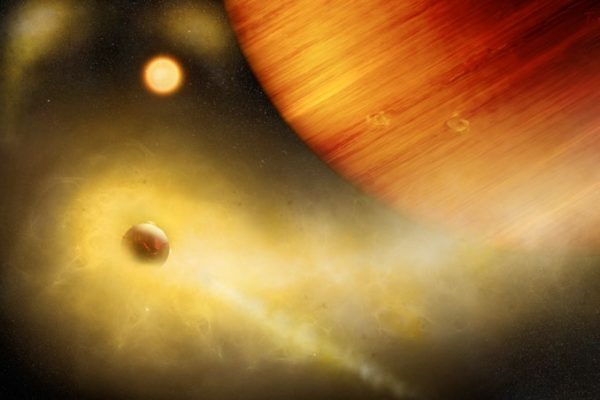Evidence found for volcanic ‘extreme Io’ exomoon – Astronomy Now – Astronomy Now Online

Astronomers studying a gas giant exoplanet 550 light years away have detected the spectral signature of high-altitude sodium gas, suggesting the presence of a hellish, tidally-heated exomoon dotted with active volcanoes and flowing lava.
“It would be a dangerous volcanic world with a molten surface of lava, a lunar version of close-in super-Earths like 55 Cancri-e,” said Apurva Oza, a postdoctoral fellow at the Physics Institute of the University of Bern. “The neutral sodium gas is so far away from the planet that it is unlikely to be emitted solely by a planetary wind.”
The planet, known as WASP-49b, whips around its host star in less than three days at a distance of just 5.7 million kilometres (3.5 million miles). Extreme tidal forces, the result of gravitational stress, could provide the energy needed to generate active volcanism similar to that seen on Jupiter’s volcanically active moon Io.
“Sodium and potassium lines are quantum treasures to us astronomers because they are extremely bright,” said Oza. “The vintage street lamps that light up our streets with yellow haze is akin to the gas we are now detecting in the spectra of a dozen exoplanets.”
Observations of Io from Earth, along with calculations of how much mass is lost through active volcanoes, show an exo-Io is a plausible source of the observed sodium above WASP-49b.
“While the current wave of research is going towards habitability and biosignatures, our signature is a signature of destruction,” said Oza. “The exciting part is that we can monitor these destructive processes in real time, like fireworks.”s Oza.





